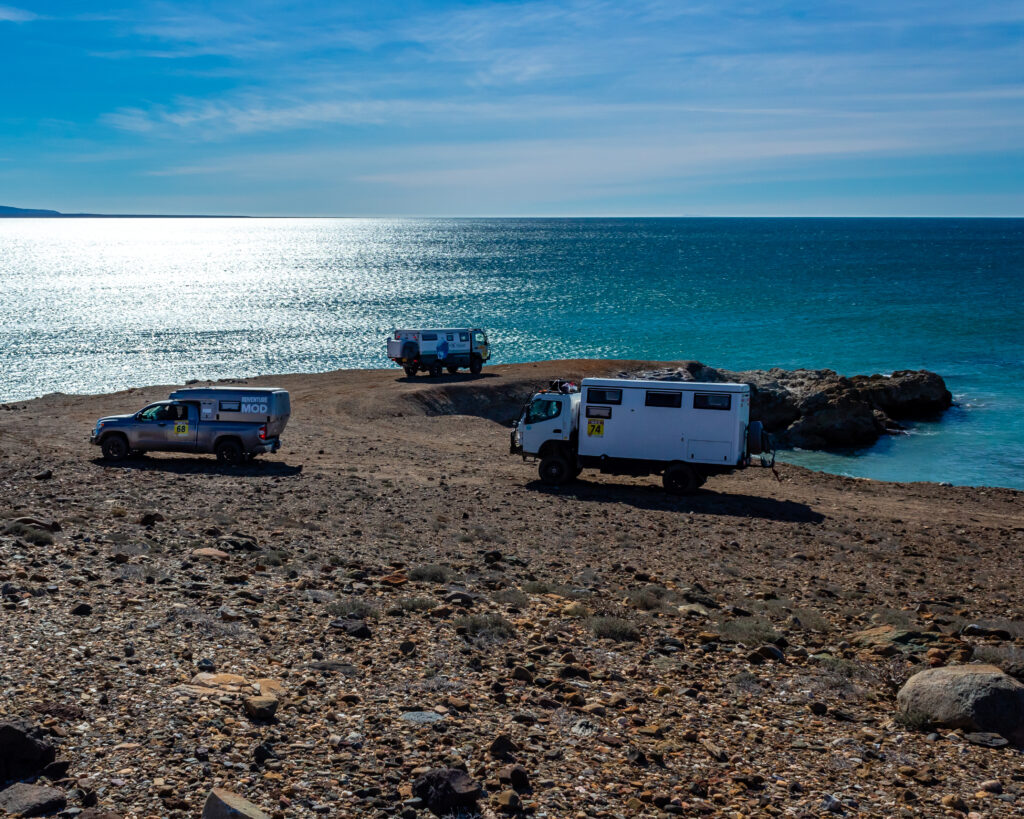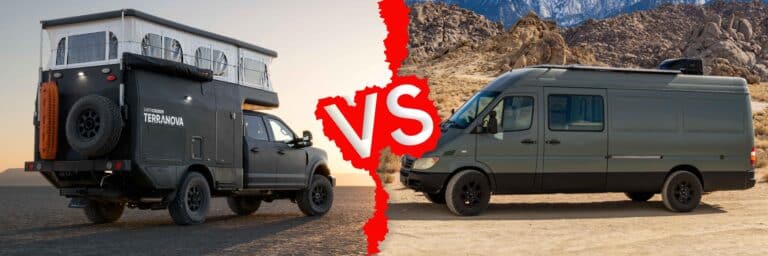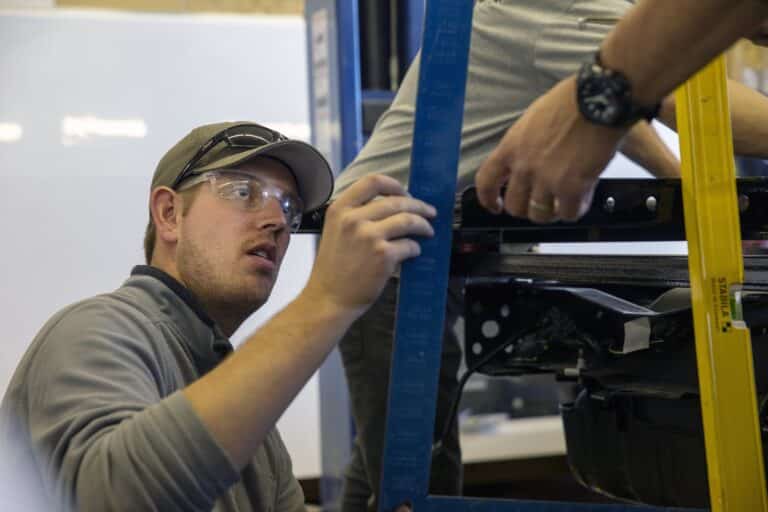Energy systems on our vehicles is a big topic. My name is Austin, I am the Lead Design Engineer with an Energy Systems background here at EarthCruiser. We’ve spent years studying and testing energy production, storage and usage optimization. We get questions daily from our community on how our systems work. While I think there are other ways to describe the details better, I found that the water bucket analogy is one of the best ways to understand the basics of a small self-contained system like you find on an EarthCruiser.
The parts of the system are:
- A bucket (the battery)
- Incoming water (energy production i.e. Solar, plugin, alternator)
- Outgoing water (Load i.e. anything that uses energy in the truck)

For those who are a bit savvier on this topic, please excuse the oversimplification that doesn’t account for things like charge efficiencies through a converter or charger, power factor through your inverter, and temperature effects on a battery as we move forward.
On every EarthCruiser there is a battery bank – i.e., bucket. Your model year or options package determines the size of your bucket. In this example, we will look at the minimum and maximum bucket sizes for effective comparison but know that there are a range of options.
Early model EC’s owners who didn’t option up have one, 270Ah AGM battery. A relatively small bucket by comparison to a fully optioned 2023 EC with three 460Ah lithium Batteries (oops spoiler alert). In fact, when we account for the maximum allowed discharge of AGM vs LiFePO4 batteries, that bucket would go from a figurative 50 gallons (1x AGM) to 340 gallons (3x LiFePO4). That’s almost 7 times larger. There is no denying that a larger battery bank means you can go further and stay longer. However, there are plenty of early model EC customers who are operating on 1 or 2 AGMs no problem, Hmm…
To summarize this whole article in a sentence, “The water going into the bucket needs to be more, or equal to, the water going out if you don’t want to run out.”
The first way to fill your bucket is with the onboard solar. Solar panels on top of the EC’s have gotten better over the years due to technological advancements, but there are still limits. The solar array is constrained to the size of the roof. The charge coming out of the solar controller has a maximum determined by the energy density and efficiency of the panels. Imagine that the spigot over the bucket from solar energy is the size of a waterspout that you would connect a hose to. If you’re getting 35 to 40 amps out of your solar it would take you about 4 hours to fill an empty 50-gallon (1x AGM) bucket. Not too bad, and very doable on a sunny day.
If you have emptied your 340-gallon bucket, the flow coming out of the solar spigot doesn’t go up just because the bucket is bigger; it takes much longer to fill using solar (about 28 hours). This is where you would need an alternate flow coming in. When you plug into a wall outlet or run your truck with a high output alternator, it’s like sticking a fire hose in your bucket. Suddenly you are receiving 150+ amps charge. This can completely fill your 340-gallon bucket in just over 7 hours. The alternator is very effective especially during trips where you have a bit of a drive from camp spot to camp spot. With constant use it also takes a lot more time to deplete a 340-gallon bucket compared to a 50-gallon.
Now that we’ve covered how to fill the buckets, let’s go over energy use; the water spigots at the bottom of the bucket letting water out. Earlier model EC’s were less dependent on the battery and more dependent on the trucks fuel source for appliances like the water heater and cooktop. That aside, heavy energy use items such as an air conditioner, winch, and microwave; or plugin appliance like hair dryers and toaster have always been reliant on the battery. These items open the largest spigots at the bottom of the bucket. Things like the LED lighting in the house are basically a drip compared to them.
An air conditioner running at 30A would have a spigot like the kind you’d connect a hose to at your house. Where the winch is more like the firehose pumping out of the bottom of your bucket. The duration in which these appliances run is the most important part when talking about energy use.

The larger bucket allows for a larger reserve to pull from when not getting any water flow into your bucket. If you are parked under a tree for some shade at a camp site and you don’t have any means of plugging in the truck or just don’t want to run the engine for charge, that larger bucket allows you draw from it for a much longer time before the need to charge up. So how do you pick the right sized bucket for your EarthCruiser?
It depends on what kind of camper you are. Clearly you can get by with a small bucket, but you need to pay attention to what spigots are running at the top and bottom to keep from running dry. If you are an absolute energy nerd like I am, you would look at the solar charge in and energy use out, 10 times a day. Playing a fun balancing act to stay energy neutral and run as much as possible on solar power while keeping my battery topped off at 100%. That takes dedication and planning to an off-grid lifestyle.
If you are normal, you probably want a bit more freedom and maybe a bit more security so that you won’t run low on power. We always specify our EarthCruisers minimum battery capacities to give you peace of mind even if the sun’s not out all the time and you are using your truck and its appliances as expected.
You are going to want to max out your battery options if you are a heavy energy user or planning an expedition that might take you somewhere that would limit your ability to turn those fill spigots on. A good example would be a trip up to the arctic where plugins are rare, it’s cloudy often, the sun is low in the sky, and fuel might be scarce.
Whatever your energy use tendencies are we have an option for it. We are constantly testing products and designing EarthCruiser to be as efficient with its energy as possible. Rest assured that the spigots are optimized both in and out of your bucket. If you have any questions our friendly sales team can always help you walk through it. Cheers and hope this helps.










